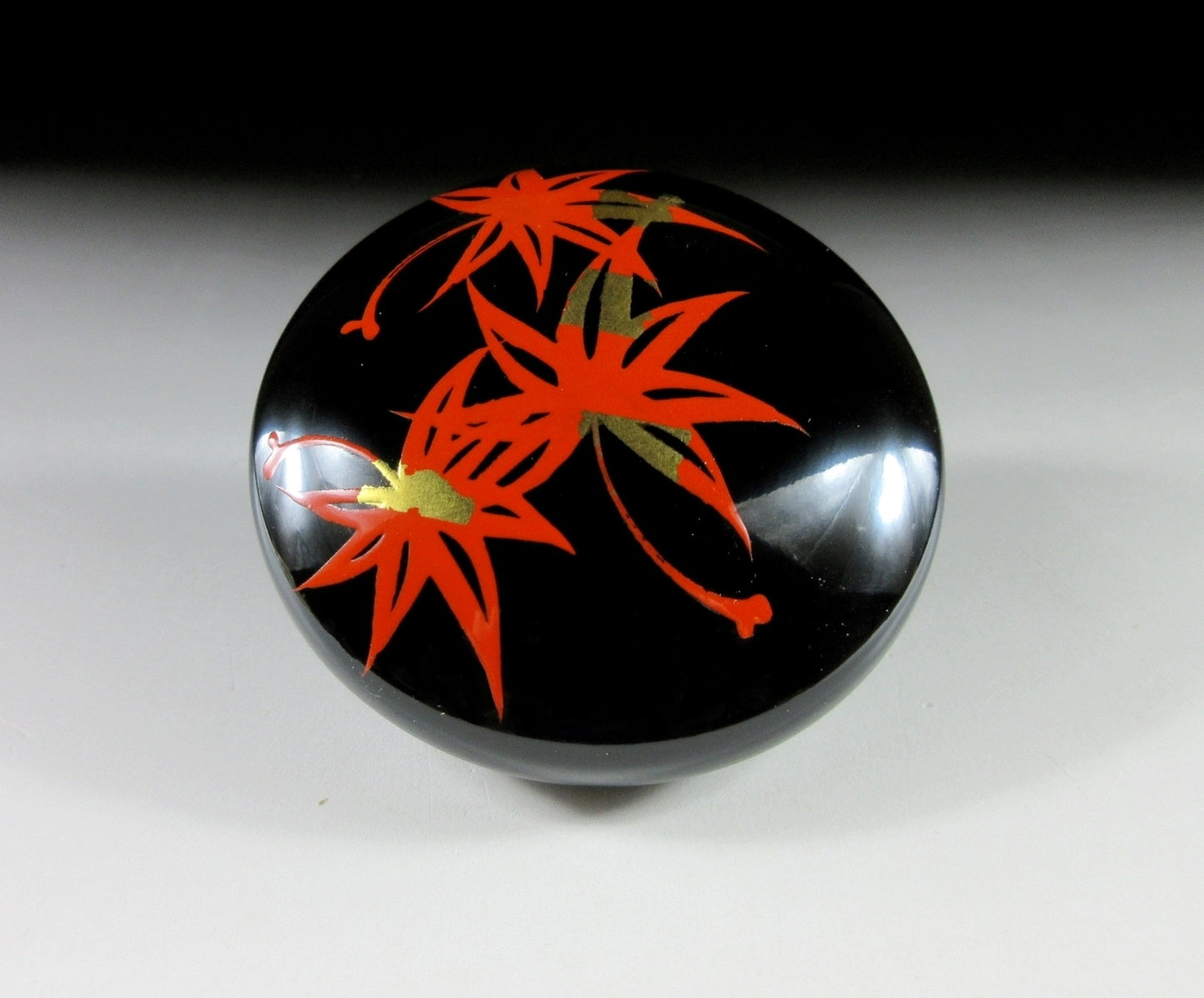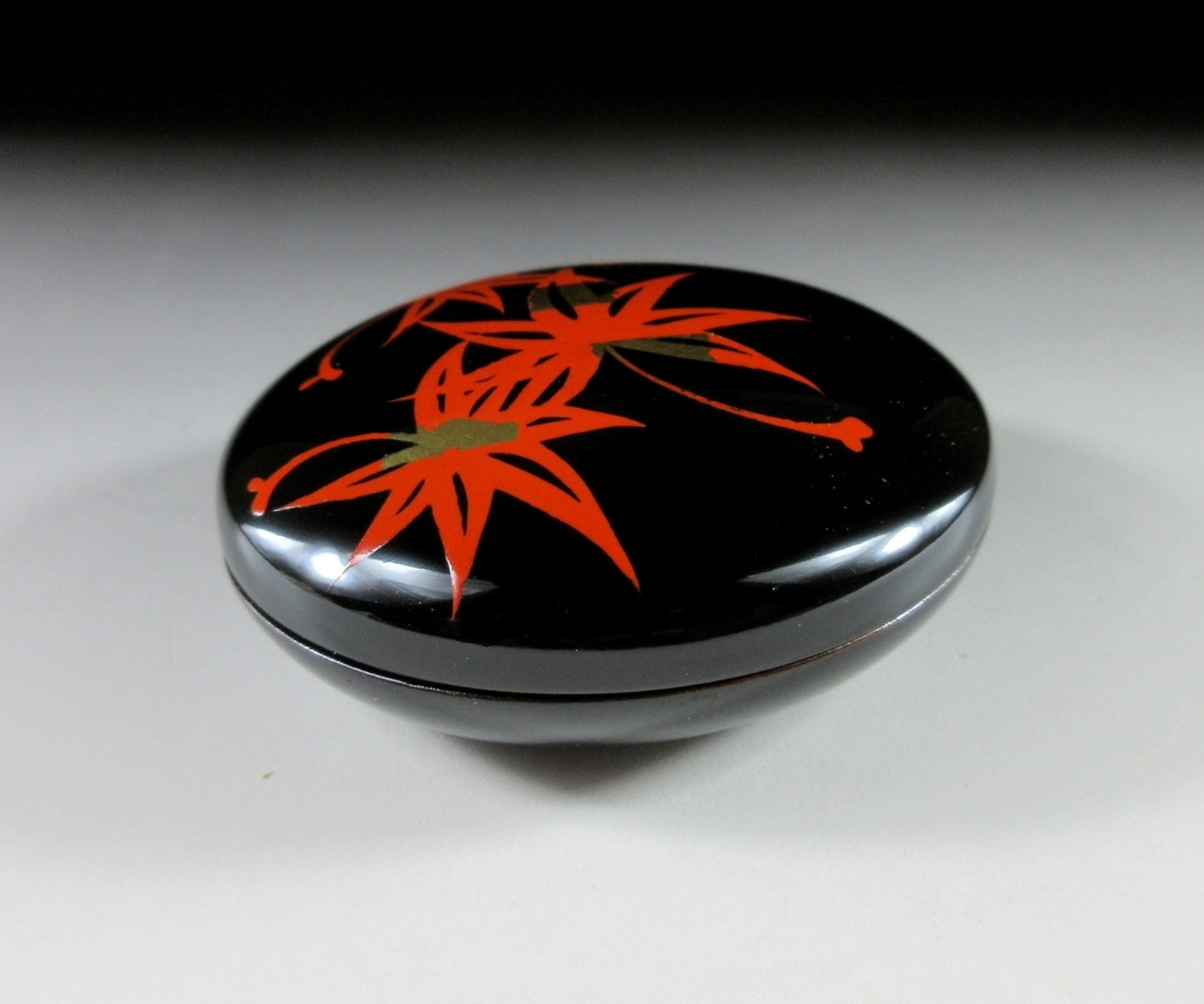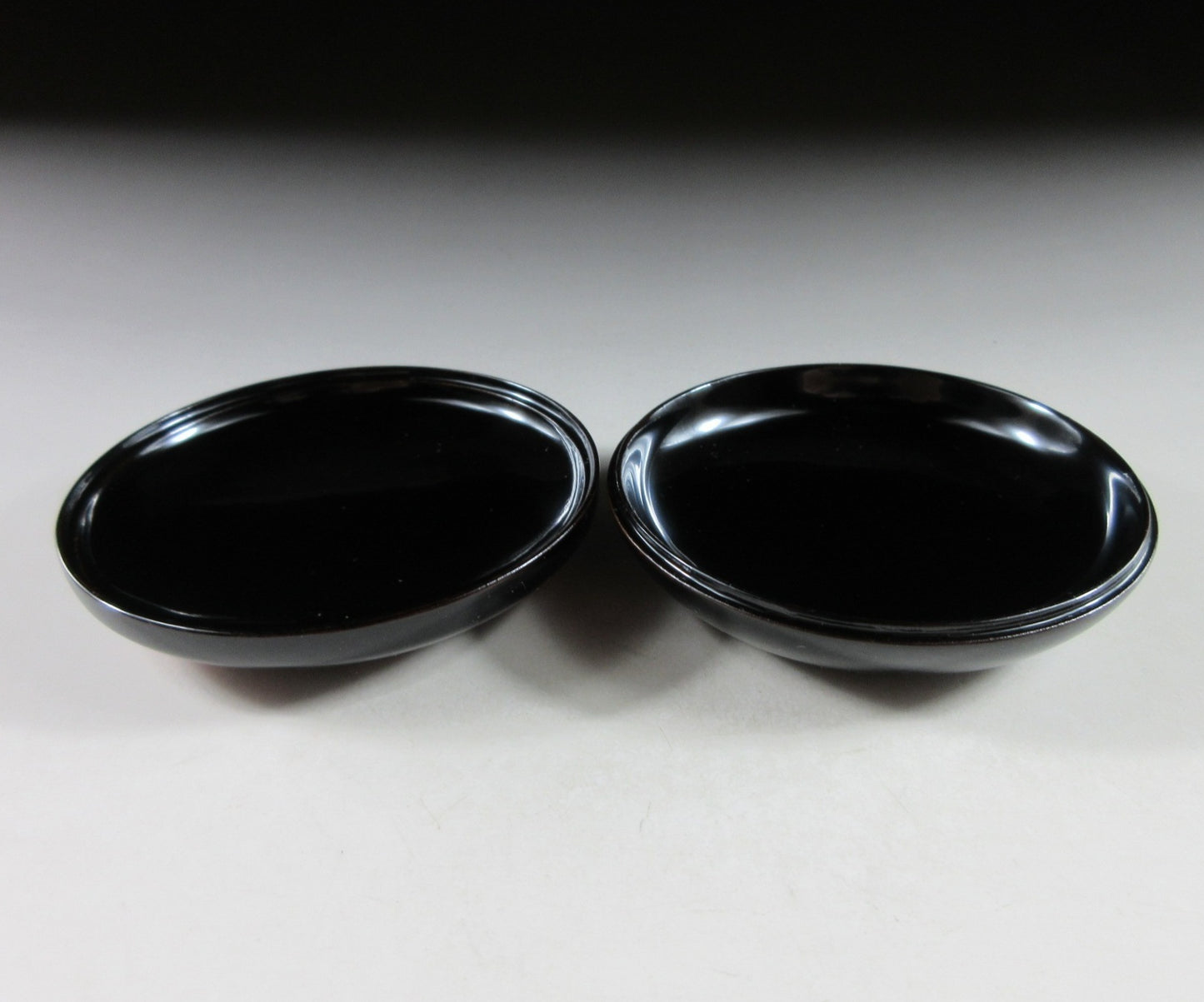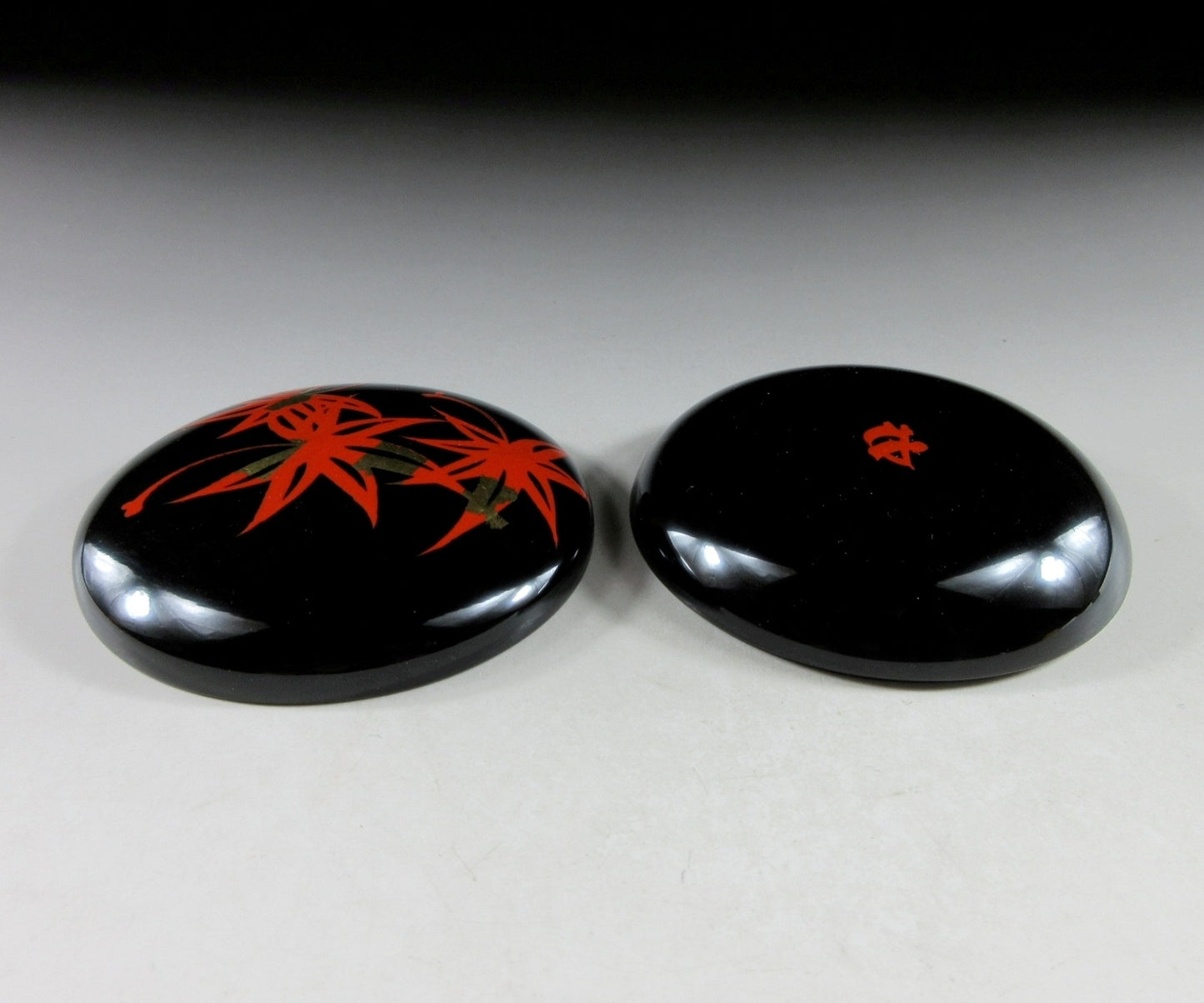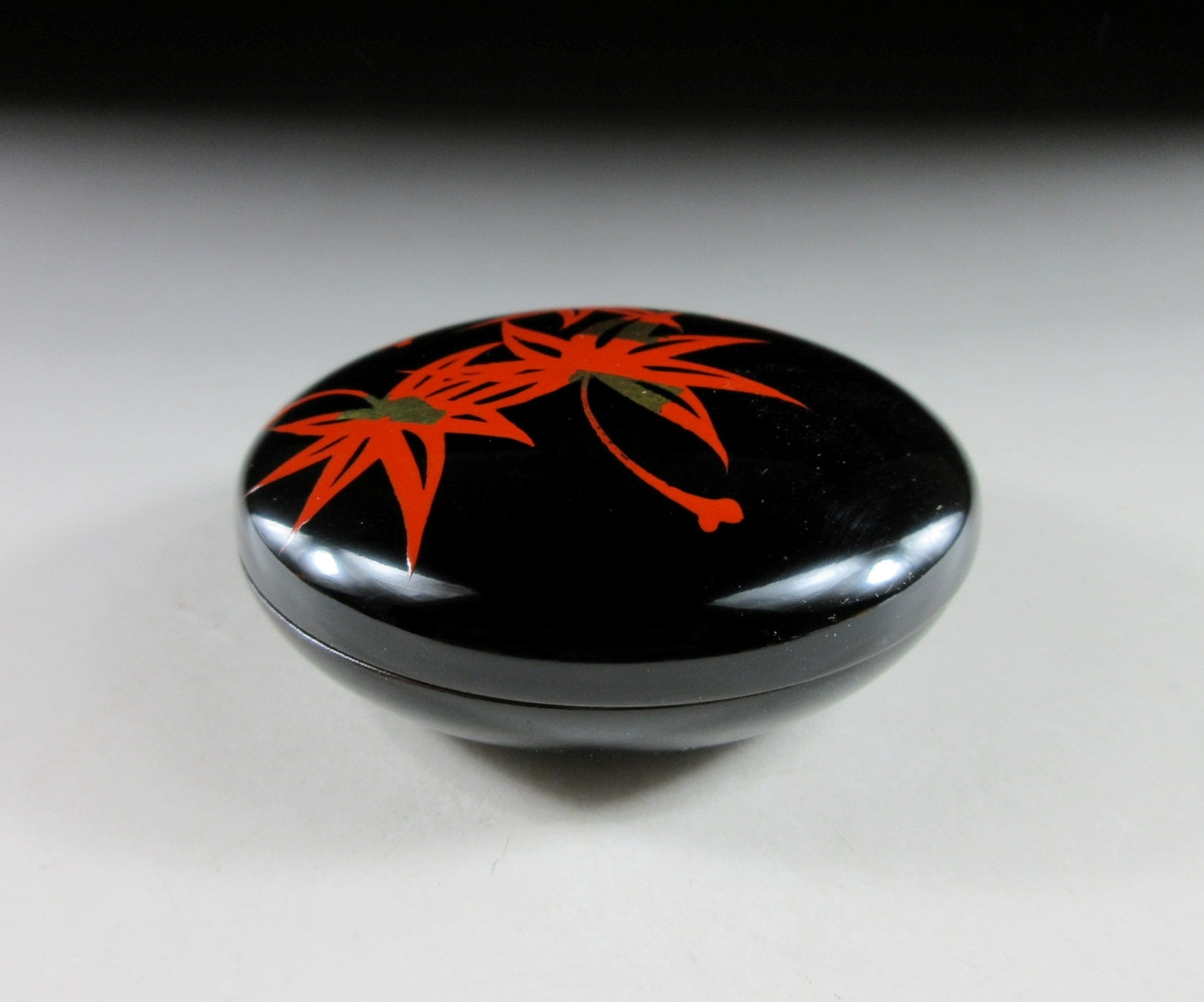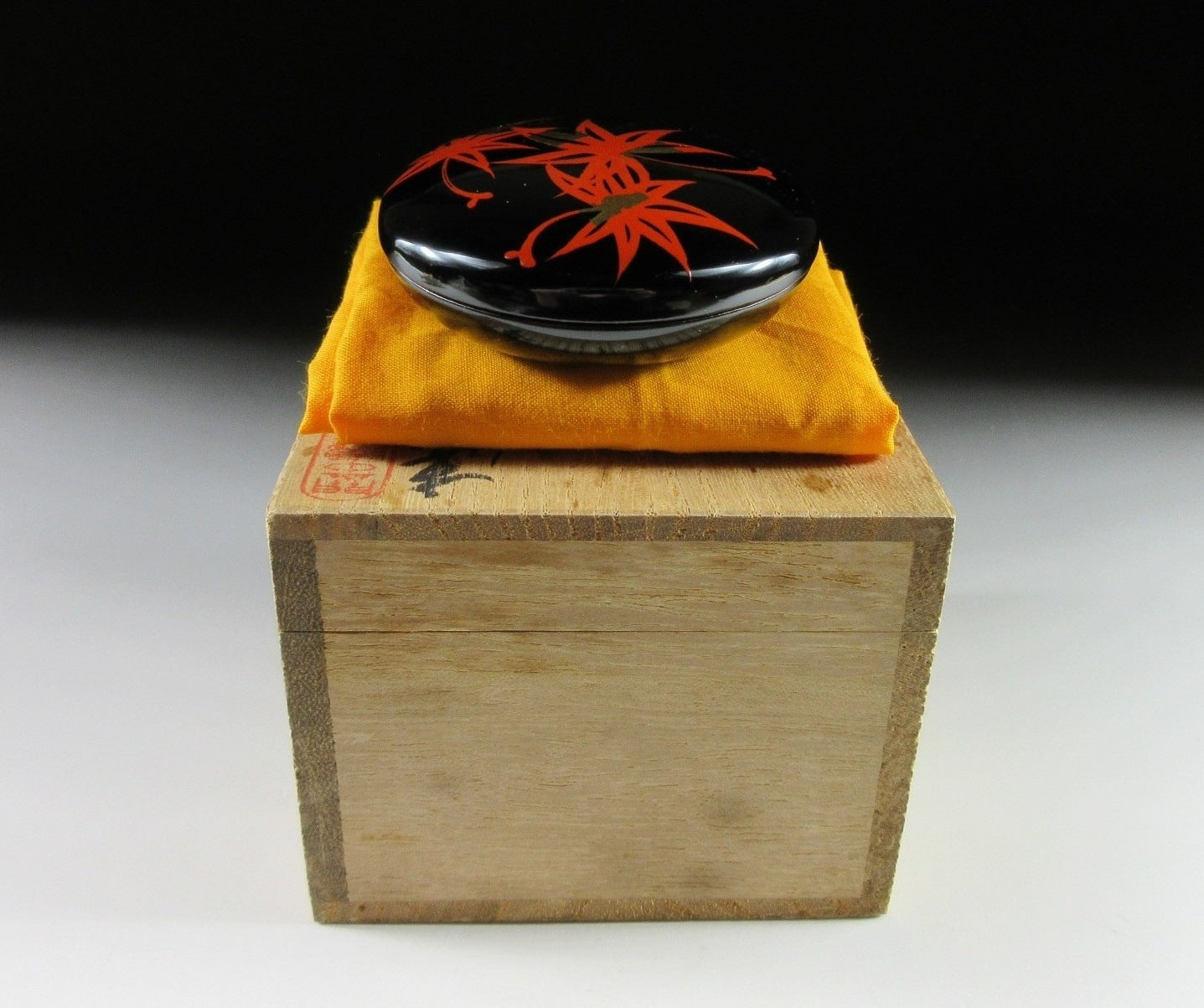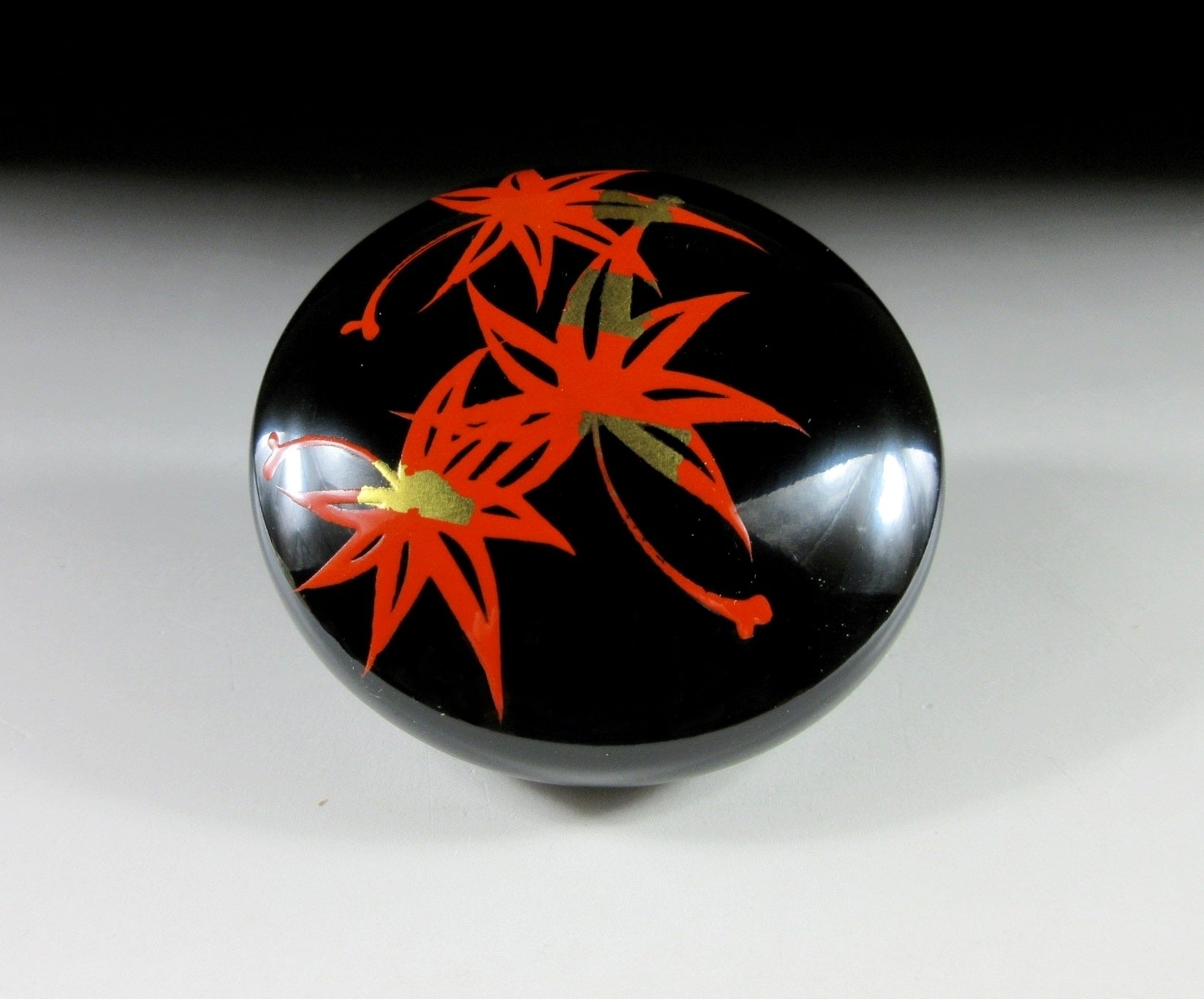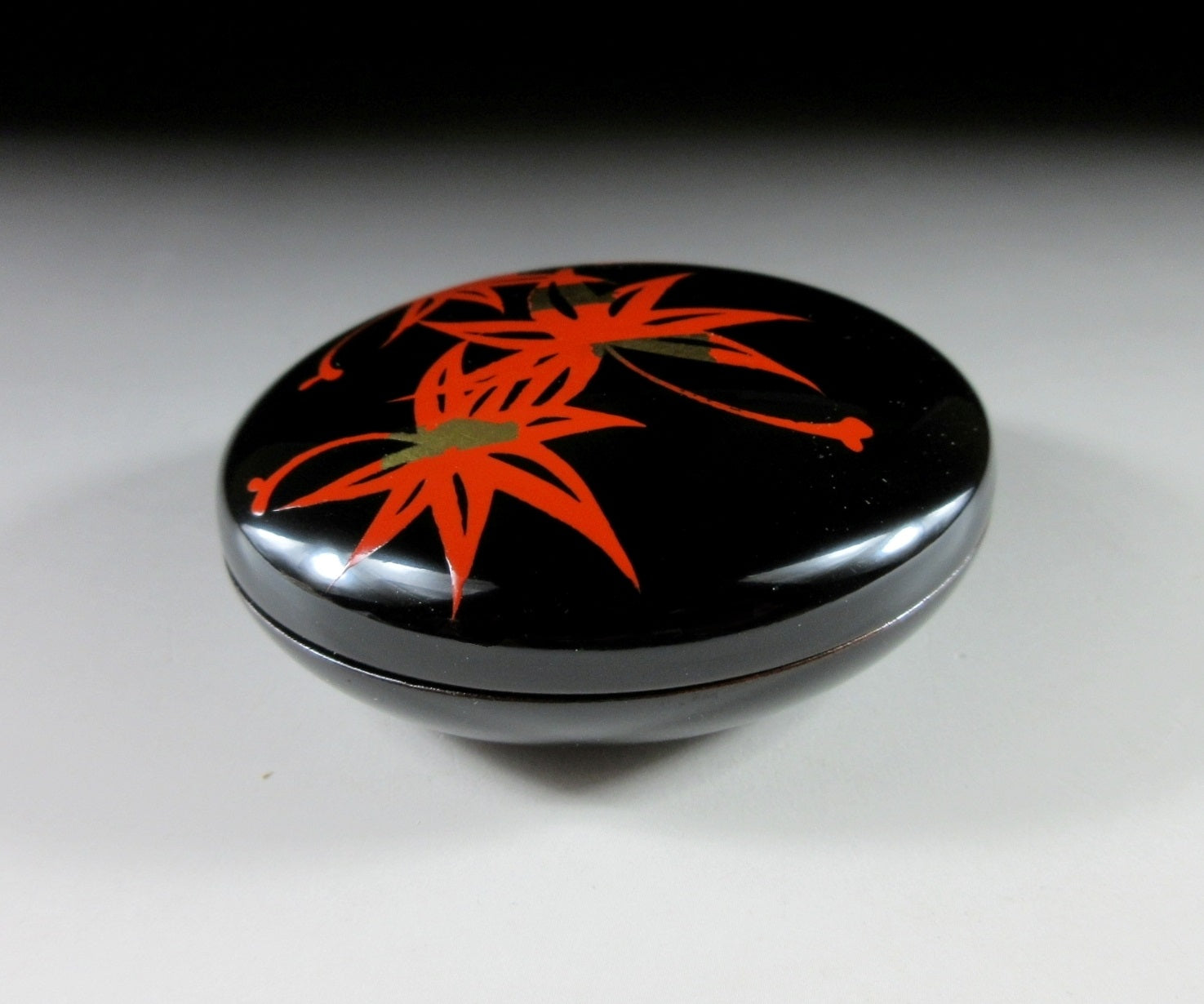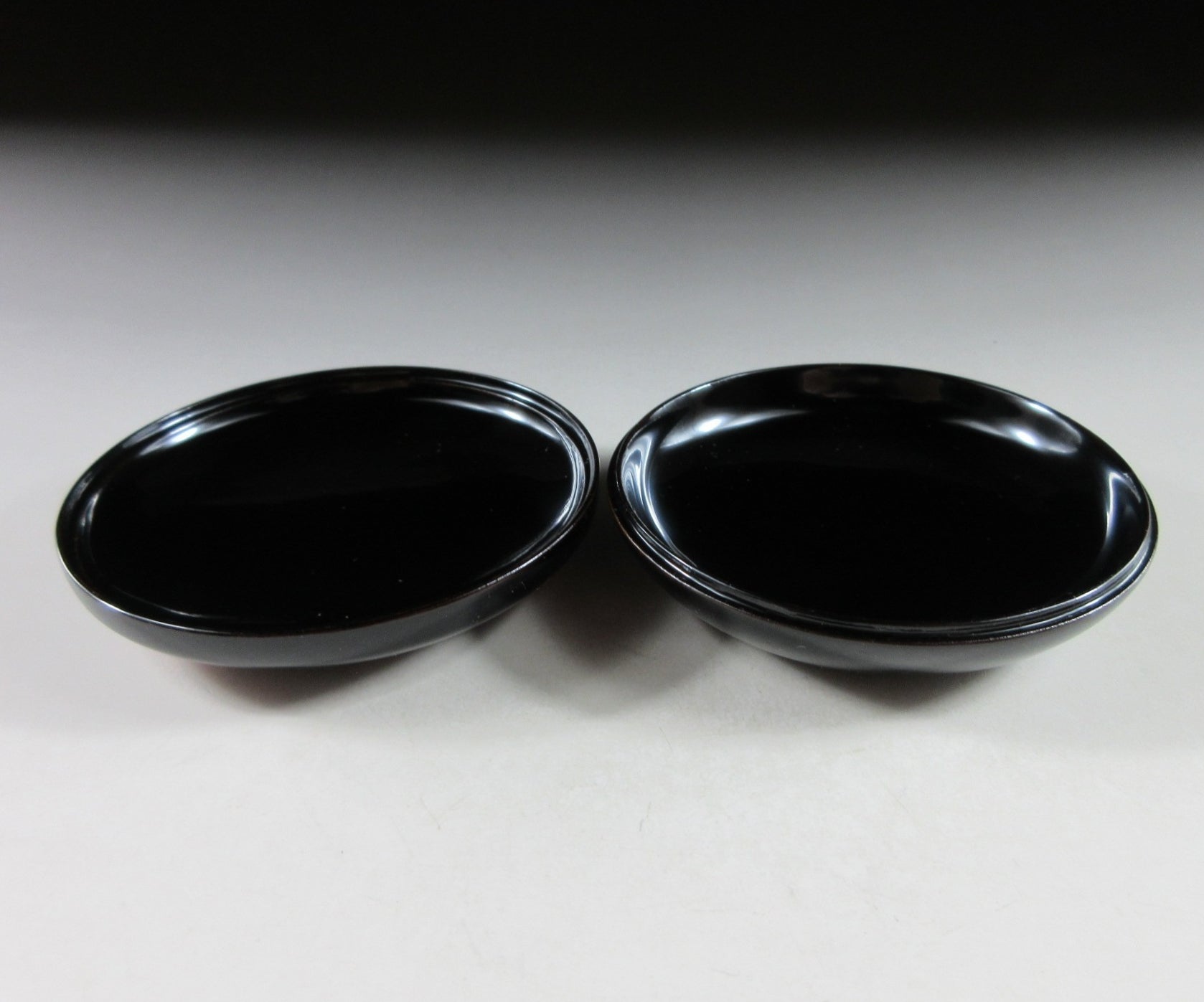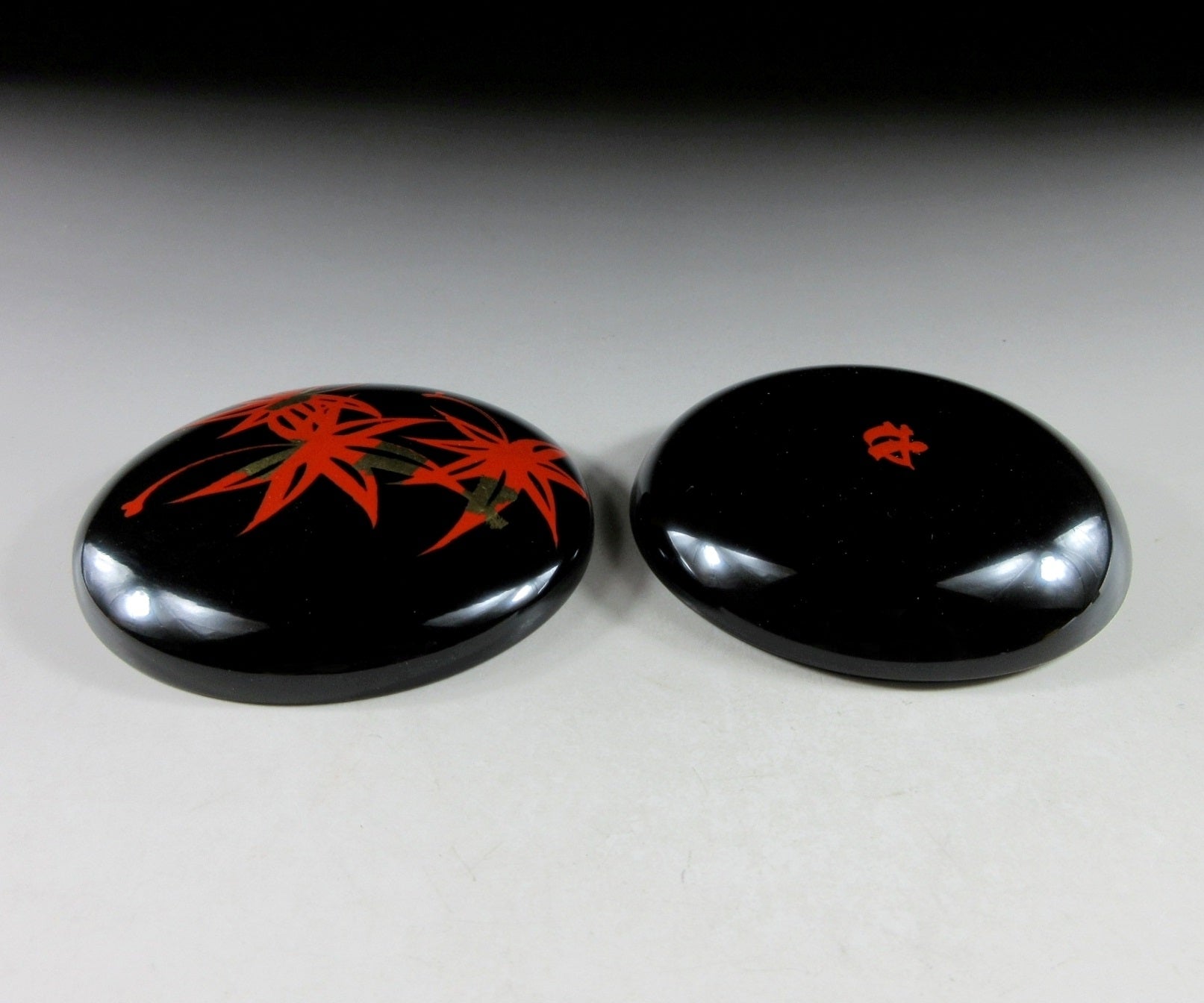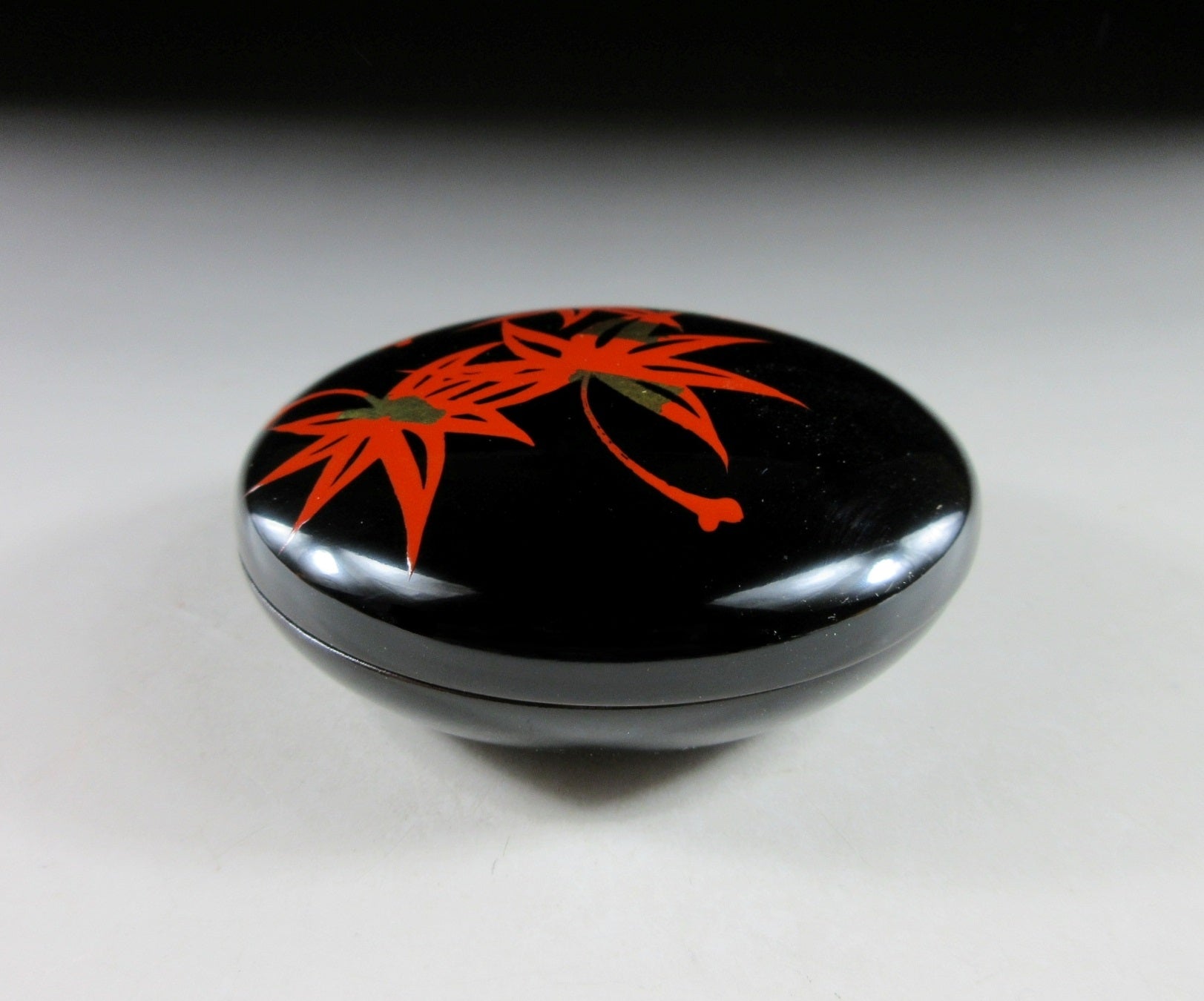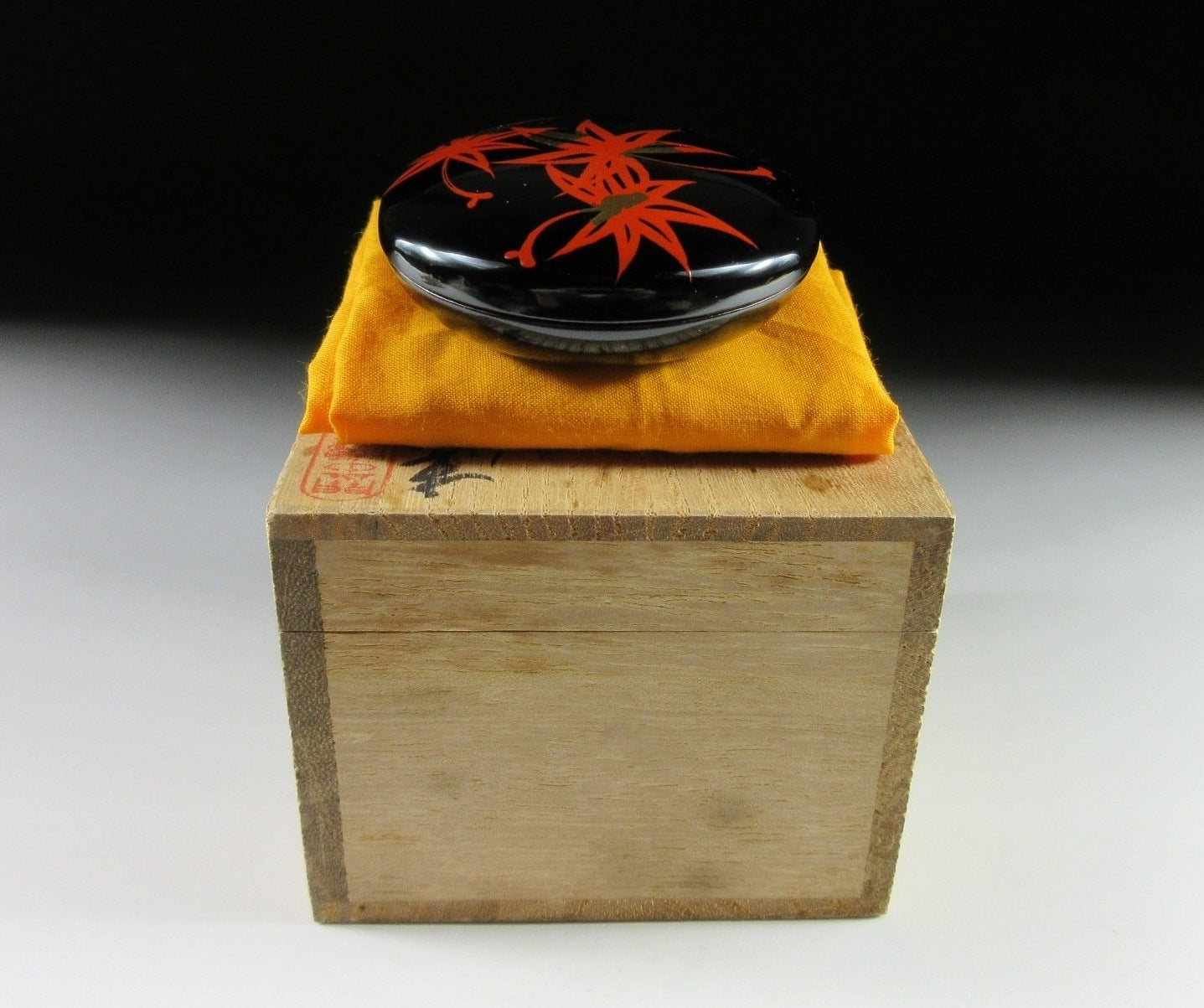Kominka Zakka
Hidehira-nuri Momiji Kogo
Hidehira-nuri Momiji Kogo
Couldn't load pickup availability
*SHIPPING OPTIONS VARY DEPENDING ON THE DESTINATION, PLEASE SCROLL TO THE END OF THIS LISTING FOR MORE DETAILS.
This listing is for a vintage Hidehira-nuri kogo made around 30-40 years ago. It is made of wood coated in glossy black lacquer, and the lid is decorated with red and gold momiji leaves. This particular kogo is thin and better suited to holding the woodchip type of incense. It comes with its original signed wooden storage box and a yellow wrapping cloth for when the item is not in use.
Hidehira nuri refers to lacquerware produced in Hiraizumi city in Iwate Prefecture. It is said that Hidehira lacquerware production began the end of the Heian Period (794-1185) when local warlord Fujiwara no Hidehira summoned craftsmen from Kyoto to produce wares for the ruling Oshu Fujiwara clan. Hidehira pieces are robust in their construction and they are often decorated with makie or gold leaf. A common pattern is the yusoku design which combines Genji cloud designs and diamond motifs inspired from the Heian period. Hidehira pieces are known for their durability and refined elegance.
Makie refers to a crafting technique in Japan from presumably the Nara period. Craftsmen sprinkle gold or silver metal powder over successive layers of lacquer before it dries. Traditionally pure gold powder, pure gold flakes, and pure silver powder were used to complete motifs on lacquerware. The process of applying gold or silver powder requires both time and skill. At first the craftsman sketches out the design. He or she then adds charcoal powder to the base of the relief, and then a layer of urushi lacquer. Gold or silver powder is sprinkled over the wet lacquer, which acts as an adhesive. The surface is polished and then the process is repeated over and over until a beautiful raised pattern appears.
Kogo are for holding incense during the tea ceremony. Kogo vary depending on the season. In summer wooden kogo are used for holding chips of incense wood, and in winter ceramic kogo are used for holding kneaded incense intended for the hearth. During the tea ceremony, incense is added to the charcoal fire during the charcoal-laying procedure.
Sizes
Box: H.7.8cm (3”) x 9.8cm (3.8”) x 9.8cm (3.8”)
Kogo: H.2cm (0.7”) x Dia.6.9cm (2.7”)
Condition
The kogo is in very good condition, the lid of the box however is spotty and stained.
THESE ARE SHIPPING ESTIMATES BASED ON THE CURRENT GLOBAL SITUATION
**Germany, France, Greece, Spain, Poland, Austria, Slovakia, Lithuania, Slovenia: NO SHIPPING. Very strict and expensive packaging laws in place and we are not licensed to send products to these countries. We have no plan to register at this time because the process is in some cases very expensive and complicated, plus each country has its own set of regulations and application process.
**USA, UK, Canada, Australia, New Zealand, Switzerland, Norway: Airmail Small Packet (approx. 15-28 days). Combined shipping available up to 2kgs for Airmail Small Packet (please send us a message).
**Asia: Airmail Small Packet (approx. 15-21 days). Combined shipping available up to 2kgs for Airmail Small Packet (please send us a message).
**Central Asia, Middle East, South Africa, Brazil, Mexico: EMS Express 10-15 days.
**Russia: No shipping methods available.
Share
